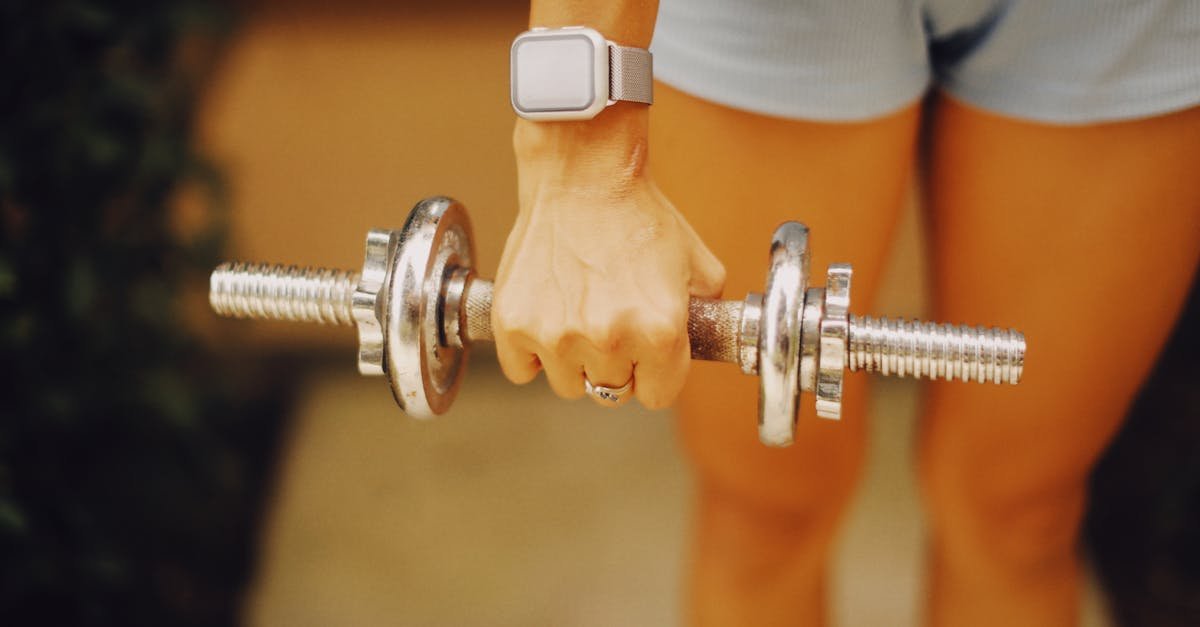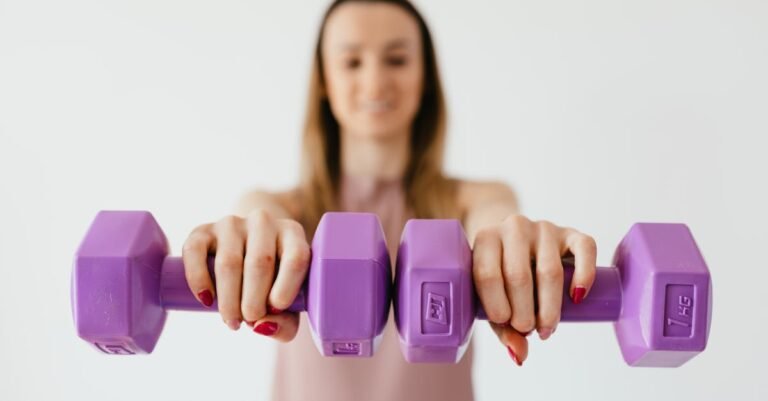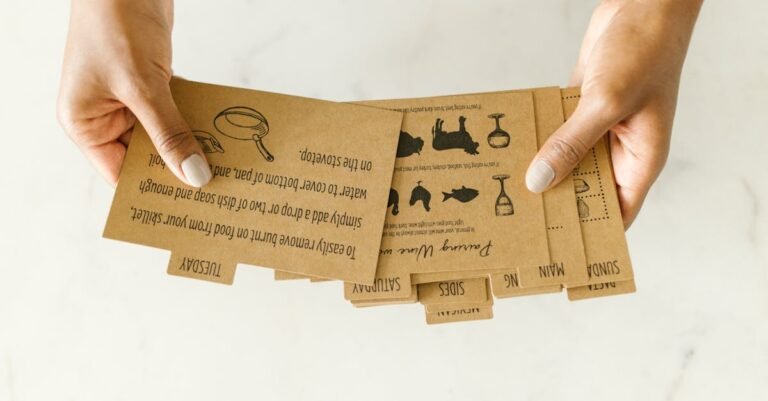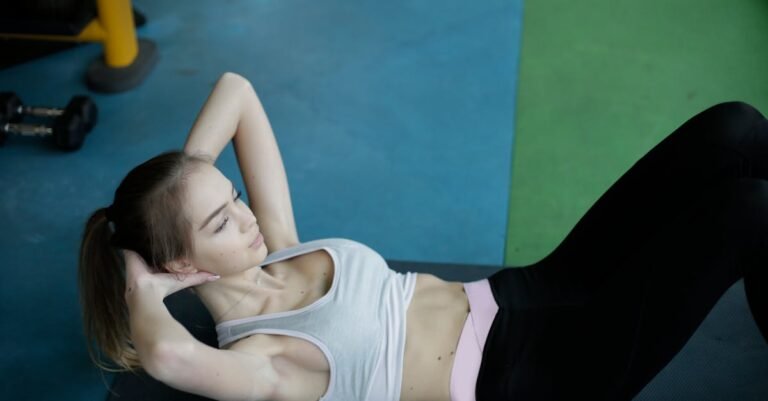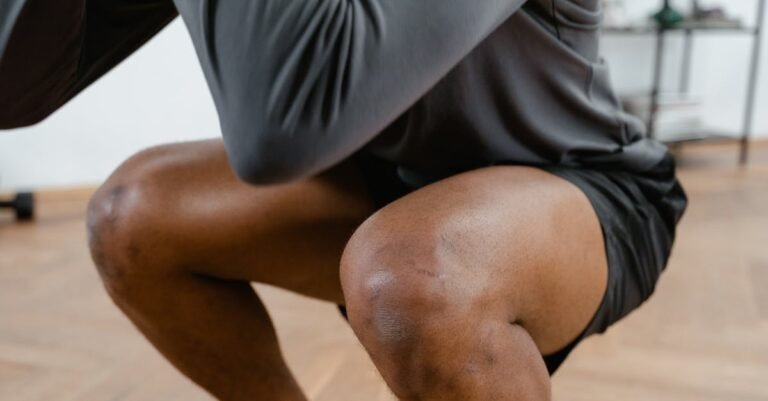Table of Contents
- Sculpt Sleek Arms: The Ultimate Guide to Arm Toning Exercises Without Weights
- Why Go Weight-Free for Arm Toning?
- Understanding Arm Muscles: What Are We Targeting?
- Top Bodyweight Exercises for Toned Arms
- Putting It All Together: Sample Routines
- Maximizing Your Results Without Weights
- Beyond Exercises: Lifestyle Factors for Toned Arms
- Conclusion: Embrace Your Bodyweight Power
- Frequently Asked Questions (FAQs)
Sculpt Sleek Arms: The Ultimate Guide to Arm Toning Exercises Without Weights
Ever dream of having strong, toned arms that look fantastic in sleeveless tops, but the thought of clanging weights or expensive gym memberships makes you shudder? You’re not alone! Many people believe that achieving sculpted arms requires lifting heavy dumbbells or mastering complex machines. But guess what? You already possess the most effective piece of fitness equipment: your own body. Welcome to the world of weight free arm toning!
Forget the intimidation factor of the weight room. We’re diving deep into how you can effectively work your biceps, triceps, and shoulders using nothing but bodyweight resistance. It’s accessible, convenient, and surprisingly challenging. Ready to discover the power within your own limbs? Let’s get started!
Why Go Weight-Free for Arm Toning?
Before we jump into the exercises, let’s explore why bodyweight training is such a fantastic option for toning your arms. It’s not just a backup plan; it’s a smart, effective strategy with its own set of unique benefits.
Accessibility and Convenience
This is perhaps the biggest draw. No gym membership? No problem. Traveling? Your workout travels with you. Short on time? You can squeeze in a quick session anytime, anywhere – your living room, a hotel room, a park. Bodyweight exercises eliminate the barriers of cost, location, and equipment. All you need is a little space and the motivation to move. It’s fitness freedom at its finest!
Reduced Risk of Injury
While lifting heavy weights can be effective, it also carries a higher risk of injury if your form isn’t perfect or if you push too hard too soon. Bodyweight exercises generally involve more natural movement patterns. Because you’re working against your own resistance, you’re less likely to overload your joints or muscles suddenly. This makes it a safer option, especially for beginners or those returning to exercise after a break. You learn to control your body before adding external loads.
Building Functional Strength
Think about your daily activities: pushing open a heavy door, lifting groceries, carrying a child, reaching for something on a high shelf. These movements rarely involve isolating a single muscle like a dumbbell curl does. Bodyweight exercises often engage multiple muscle groups simultaneously, mimicking real life movements. This builds functional strength – strength that translates directly into making everyday tasks easier and improving your overall physical capability. You’re not just building show muscles; you’re building useful, practical strength.
Understanding Arm Muscles: What Are We Targeting?
To effectively tone your arms, it helps to know a little bit about the muscles you’re working. Understanding the ‘what’ and ‘where’ allows you to focus your effort and ensure you’re hitting all the key areas for that sculpted look.
Biceps: The Front Show Muscles
Located on the front of your upper arm, the biceps brachii (or just ‘biceps’) are probably the most famous arm muscles. They’re responsible for flexing your elbow (bending your arm) and supinating your forearm (turning your palm upwards). Think about picking up a bag or doing a pull up – that’s your biceps at work. While traditionally associated with curling weights, we can effectively engage them using bodyweight resistance and isometric contractions.
Triceps: The Back Arm Powerhouses
Often overlooked but crucial for balanced, toned arms, the triceps brachii sit on the back of your upper arm. They actually make up about two thirds of your upper arm mass! Their primary job is to extend the elbow (straightening your arm). Pushing movements, like pushing yourself up from a chair or doing a push up, heavily rely on the triceps. Targeting these muscles is key to avoiding that dreaded ‘arm jiggle’ and achieving a sleek, defined look from all angles.
Shoulders (Deltoids): The Cap
Your shoulder muscles, primarily the deltoids, form the rounded cap over the upper arm and shoulder joint. They are involved in lifting and rotating your arm in multiple directions. Well defined shoulders contribute significantly to the overall appearance of toned arms, creating a visually appealing taper from the shoulder down. Many bodyweight pressing exercises, like push ups and planks, indirectly work the shoulders, but we can also incorporate movements specifically targeting them.
Top Bodyweight Exercises for Toned Arms
Alright, let’s get to the good stuff! Here are some highly effective bodyweight exercises that will challenge your biceps, triceps, and shoulders, helping you sculpt the arms you desire without touching a single weight.
Classic Push Ups: The Undisputed King
If there’s one bodyweight exercise that reigns supreme for upper body strength, it’s the push up. It’s a compound movement, meaning it works multiple muscle groups simultaneously, including your chest, shoulders, and, crucially for us, your triceps. It’s the bread and butter of weight free arm training.
Perfecting Your Push Up Form
Form is everything with push ups to maximize effectiveness and prevent injury. Start in a high plank position, hands slightly wider than shoulder width apart, fingers pointing forward. Your body should form a straight line from your head to your heels – no sagging hips or arched back! Engage your core. Lower your body by bending your elbows, keeping them relatively close to your body (not flared out wide) until your chest nearly touches the floor. Push back up explosively to the starting position. Keep that core tight throughout!
Variations for All Levels (Knee, Incline, Wall)
Standard push ups too tough? No worries!
- Wall Push Ups: Stand facing a wall, arms length away. Place your hands on the wall at shoulder height and width. Lean in, bending your elbows, then push back. The further your feet are from the wall, the harder it is.
- Incline Push Ups: Place your hands on an elevated surface like a sturdy table, countertop, or bench. The higher the surface, the easier the push up. Maintain that straight body line!
- Knee Push Ups: Perform the push up motion but with your knees on the ground instead of your toes. Focus on lowering your chest, not just your head.
As you get stronger, you can progress from wall to incline to knee to full push ups. You can even make them harder with decline push ups (feet elevated) or close grip push ups (emphasizing triceps).
Triceps Dips: Isolating the Back of Your Arms
Ready to specifically target those triceps? Dips are your go to exercise. They effectively isolate the back of the arm, helping to build strength and definition.
Using a Chair or Step
You’ll need a stable surface like a sturdy chair, bench, coffee table, or the edge of a step. Sit on the edge of the chair/step, placing your hands on the edge beside your hips, fingers pointing forward. Extend your legs out in front of you – the straighter your legs, the harder the exercise; bent knees make it easier. Scoot your hips forward off the chair.
Form Focus for Maximum Impact
Lower your body straight down by bending your elbows, keeping them pointing directly behind you (not flaring out to the sides). Lower until your upper arms are roughly parallel to the floor or you feel a good stretch in your triceps. Keep your back close to the chair/step. Push back up through your palms, fully extending your elbows and squeezing your triceps at the top. Avoid letting your shoulders shrug up towards your ears.
Plank Variations: More Than Just Core Work
While famous as a core strengthener, the plank and its variations are fantastic for shoulder stability and engaging the arms isometrically (holding a contraction). Holding your bodyweight requires significant effort from your shoulders and triceps.
Plank Jacks
Start in a high plank position (hands under shoulders, straight line body). Keeping your upper body stable, jump your feet out wide, then jump them back together, like a horizontal jumping jack. This adds a cardio element and further challenges your shoulder stability as you resist movement in your upper body.
Plank Shoulder Taps
Again, start in a high plank. Keeping your hips as still as possible (imagine balancing a glass of water on your lower back!), slowly lift one hand and tap the opposite shoulder. Return the hand to the floor and repeat on the other side. This requires immense core stability and seriously works the stabilizing muscles in your shoulders and triceps of the supporting arm.
Arm Circles: Simple Yet Effective
Don’t underestimate the power of simple movements! Arm circles are great for warming up the shoulder joint and can provide a surprising burn when done with intention and for a duration.
Stand or sit tall with your arms extended straight out to the sides at shoulder height, palms facing down. Make small, controlled circles forward. Focus on keeping your arms straight and engaging the shoulder muscles. After 30 seconds to a minute, reverse the direction, making small circles backward. You can vary the size of the circles and the palm direction (up, down, forward, back) to work the muscles slightly differently. Feel that shoulder fatigue build!
Isometric Holds: Feel the Burn
Isometric exercises involve contracting a muscle without changing its length. This creates tension and can be surprisingly effective for building strength and endurance, especially when weights aren’t available.
Bicep Contractions (Prayer Pose Push)
Bring your palms together in front of your chest, fingers pointing upwards (like a prayer position). Push your palms firmly against each other. You should feel a strong contraction in your chest and, importantly for us, your biceps. Hold this tension for 20 30 seconds, breathing steadily. You can also interlock your fingers and try to pull your hands apart, which also engages the biceps intensely.
Tricep Extensions (Overhead Press Simulation)
Clasp your hands together and raise them overhead. Now, actively try to push your hands upwards towards the ceiling while simultaneously resisting that movement – imagine you’re trying to push something very heavy overhead, but it won’t budge. Alternatively, place one hand on the back of the opposite upper arm (near the elbow) as you try to straighten that arm against the resistance of your hand. Focus on contracting the triceps muscle of the straightening arm. Hold the tension for 20 30 seconds per arm.
Putting It All Together: Sample Routines
Knowing the exercises is one thing; structuring them into a workout is another. Here are a couple of sample routines to get you started. Remember to warm up before each session (e.g., with arm circles, dynamic stretches) and cool down afterward.
Beginner Bodyweight Arm Blast
Perform each exercise for the suggested reps or time, rest for 60 90 seconds between exercises, and complete 2 3 rounds.
- Wall Push Ups: 10 15 repetitions
- Triceps Dips (knees bent): 8 12 repetitions
- Plank Hold: 20 30 seconds
- Arm Circles (forward & backward): 30 seconds each direction
- Isometric Bicep Contraction (Prayer Push): 20 seconds hold
Intermediate Arm Sculpting Circuit
Perform exercises back to back with minimal rest (15 20 seconds) within the circuit. Rest 60 90 seconds after completing one full circuit. Aim for 3 4 rounds.
- Incline or Knee Push Ups: 12 15 repetitions (or as many as possible with good form)
- Triceps Dips (legs straight): 10 15 repetitions (or AMRAP)
- Plank Shoulder Taps: 16 20 total taps (8 10 per side)
- Plank Jacks: 20 30 seconds
- Isometric Tricep Extension Hold: 20 30 seconds per arm
- Arm Circles (larger circles, vary palm direction): 45 seconds each direction
Listen to your body! Adjust reps, sets, and rest times based on your fitness level. The goal is to challenge yourself without compromising form.
Maximizing Your Results Without Weights
Simply going through the motions isn’t enough. To truly sculpt and tone your arms using only bodyweight, you need to focus on quality and consistency. Here’s how to get the most bang for your buck (or rather, for your bodyweight!):
Focus on Form Over Speed
I know I sound like a broken record, but it’s crucial! Performing an exercise incorrectly not only reduces its effectiveness but also increases your risk of injury. Slow down, especially when learning a new move. Feel the target muscles working. Is your core engaged during push ups? Are your elbows pointing backward during dips? Quality repetitions are far more valuable than quantity.
Mind Muscle Connection is Key
This sounds a bit ‘woo woo’, but it’s scientifically backed. Actively think about the muscle you intend to work as you perform the exercise. For example, during triceps dips, consciously focus on squeezing your triceps at the top of the movement. During isometric holds, really concentrate on generating maximum tension in the target muscle. This mental focus enhances muscle fiber recruitment, leading to better results even without external weight.
Consistency Trumps Intensity (Sometimes!)
You don’t need to crush yourself in every workout. Showing up consistently, even for shorter sessions, several times a week, is more effective in the long run than sporadic, super intense workouts. Aim for 2 4 bodyweight arm sessions per week, allowing rest days in between for muscle recovery. Build the habit, and the results will follow.
Listen to Your Body
Pain is not gain. Learn to differentiate between muscle fatigue (the good burn) and sharp or persistent pain (a warning sign). If something hurts, stop. Modify the exercise or rest. Pushing through genuine pain can lead to setbacks. Similarly, some days you’ll feel stronger than others. Adjust your workout intensity accordingly. Honouring your body’s signals is key to sustainable progress.
Beyond Exercises: Lifestyle Factors for Toned Arms
While exercise is the cornerstone of toning, achieving that sleek, defined look involves more than just push ups and dips. Your daily habits play a significant role too.
Nutrition’s Role
You can do all the arm exercises in the world, but if they’re hidden under a layer of excess body fat, you won’t see the definition. Toning involves both building some muscle and reducing body fat. Focus on a balanced diet rich in lean protein (supports muscle repair and growth), complex carbohydrates (provide energy), healthy fats, and plenty of fruits and vegetables. Reducing processed foods, sugary drinks, and excessive calories is crucial for revealing the toned muscle underneath. Remember, you can’t spot reduce fat – overall fat loss through diet and exercise is key.
Hydration Matters
Water is essential for nearly every bodily function, including muscle function and recovery. Dehydration can lead to fatigue, muscle cramps, and decreased performance. Aim to drink plenty of water throughout the day, especially before, during, and after your workouts. Think of water as the lubricant for your body’s engine!
The Importance of Rest and Recovery
Muscle isn’t built during the workout; it’s built during the rest period afterward. Exercise creates microscopic tears in your muscle fibers. During rest, your body repairs these tears, making the muscles stronger and slightly larger (or more toned) in the process. Ensure you’re getting adequate sleep (7 9 hours for most adults) and incorporating rest days into your workout schedule. Overtraining can hinder progress and increase injury risk.
Conclusion: Embrace Your Bodyweight Power
So there you have it! Toning your arms without weights isn’t just possible; it’s practical, effective, and incredibly empowering. By mastering exercises like push ups, dips, planks, and incorporating isometric holds, you tap into the inherent strength and resistance of your own body. Remember that achieving sleek, strong arms is a combination of targeted exercise, focusing on form and consistency, and supporting your efforts with good nutrition, hydration, and rest. You don’t need fancy equipment or an expensive gym membership to feel strong and confident. Your body is your gym. Embrace its potential, stay consistent, and enjoy the journey to stronger, more toned arms!
Frequently Asked Questions (FAQs)
FAQ 1: How often should I do these exercises?
Aim for 2 to 4 sessions per week, targeting your arms. It’s important to include rest days between sessions focusing on the same muscle groups to allow for recovery and muscle repair. For example, you could do arm workouts on Monday, Wednesday, and Friday.
FAQ 2: Can I really build muscle definition without weights?
Absolutely! While you might not build massive bulk like a bodybuilder without heavy weights, bodyweight exercises are fantastic for building functional strength, muscular endurance, and definition (toning). By progressively challenging yourself (e.g., more reps, harder variations, shorter rest), you stimulate muscle growth and improve tone.
FAQ 3: How long will it take to see results?
This varies greatly depending on individual factors like starting fitness level, consistency, diet, genetics, and intensity. You might feel stronger within a few weeks. Visible changes in muscle tone typically become noticeable after 4 to 8 weeks of consistent effort, combined with appropriate nutrition.
FAQ 4: What if I find these exercises too easy or too hard?
The beauty of bodyweight training is its adaptability. If exercises are too hard, start with easier variations (like wall push ups instead of floor push ups, or bent knee dips). If they become too easy, increase the challenge: do more repetitions or sets, decrease rest time, slow down the tempo (especially the lowering phase), or progress to harder variations (like close grip push ups or single leg assisted dips).
FAQ 5: Do I need any equipment at all?
Strictly speaking, no! Most exercises require only your body and the floor. However, having access to a sturdy chair, bench, or step is helpful for exercises like triceps dips and incline push ups, offering more variation and progression options. But you can certainly get a great arm workout with absolutely zero equipment.

